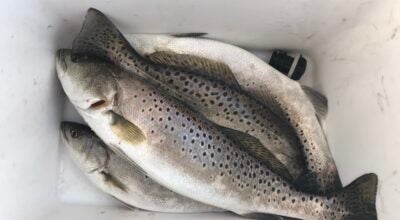Latest buzz on mosquito control
Published 8:20 pm Friday, July 12, 2013

Kevin Scott Cutler | Washington Daily News
Eugene McRoy, environmental health program specialist with the Beaufort County Environmental Health Department, studies mosquitoes collected during the county’s trapping program.
The summer’s rainfall is providing the Beaufort County Environmental Health Department with plenty of subject matter for its mosquito surveillance program.
“There are between 55 and 60 different species of mosquitoes in North Carolina and not all of them are bad ones, not all of them feed on us,” said Eugene McRoy, environmental health program specialist. “They all have their own unique niche. One of them even feeds specifically on snakes.”
In order to monitor the county’s mosquito population, the department maintains special insect traps throughout the area. Three are routinely placed in Aurora, Pamlico Beach and Washington in order to gather data from three different environments found within Beaufort County, according to McRoy.
Additional traps are set in other locations as needed, he added.
Since mosquitoes are attracted to the carbon dioxide humans and animals expel when breathing, dry ice (which also produces the chemical compound) is placed in the specially designed traps. A battery-powered light also attracts the summer pests, and a bag gathers the insects for further study. The insects are first frozen and then examined closely under a microscope.
“These traps are put out in the afternoon and we retrieve them the following morning,” McRoy explained. “This monitors the population and helps us keep track of numbers and species. We see what the population is doing, what kinds of mosquitoes are out there that feed on humans and carry diseases.”
The trapping program usually begins with the arrival of warmer weather in April or May, and continues into November, depending on temperatures.
The department maintains spreadsheets with results of the trapping program. These results have helped the county recoup costs incurred during preventive mosquito spraying, according to McRoy.
“We can actually get funding from FEMA in the event of a hurricane,” he said. “After Hurricane Irene in 2011, the county was able to get back the money that was spent on spraying for mosquitoes.”
Since an ounce of prevention is worth a pound of cure, the health department advises homeowners to be proactive in eliminating mosquito habitats.
“Some of the mosquitoes that cause problems are bred right there in our yards,” McRoy pointed out. “Do a survey around the yard and look for anything that holds water. It can be a bucket or a flower pot. Look for those sources and keep them dumped. Even a bottle cap filled with water can actually be a breeding ground for mosquitoes.”





